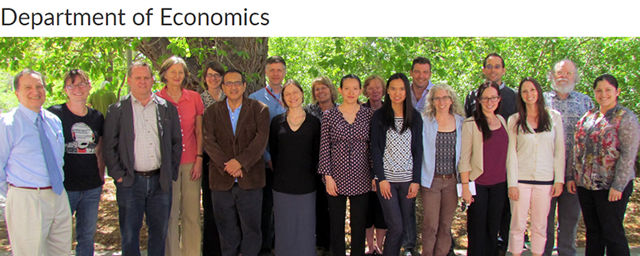
Economics ETDs
Publication Date
Summer 7-31-2022
Abstract
This dissertation consists of five chapters on air pollution. Chapter 1 discusses the issue of air pollution in two regions in South Asia: the Hindu-Kush Himalayan (HKH) Region and the Indo-Gangetic Plain (IGP). Chapter 2 builds on the canonical health production function model to investigate the heterogeneity in air pollution exposure and health outcome using data from Siddharthanagar municipality of Nepal. I use a novel approach of directly measuring individual lung functions to assess respiratory health conditions. The findings reveal lower lung functions among outdoor workers and individuals from households residing near prominent local pollution sources. The use of exposure avoidance measures positively correlates with lung function. Exposure avoidance, however, is considerably low among the marginalized groups of outdoor workers and households residing in polluted areas, underscoring the role avoidance behaviors can play in further exacerbating the exposure gap across socioeconomic subgroups.
Chapter 3 applies the double-bounded dichotomous choice contingent valuation method to estimate public willingness to pay (WTP) for clean air. I primarily find significant WTP hotspots in areas near brick kilns and high traffic movement. On the contrary, more exposed outdoor workers have significantly lower WTP. After accounting for choice uncertainty and protest responses, I estimate a mean WTP value of NRs. 774.72 (~USD 6.6)—0.43% of annual household income. This study offers the first empirical evidence of the stated preference for ambient air quality improvement in Nepal. Chapter 4 examines poor health-induced socioeconomic burdens of air pollution exposure. I mainly focus on three indicators: treatment expenditure and work and school absenteeism. I find residential exposure to local pollution sources is strongly associated with higher treatment expenditure and school absenteeism, while outdoor workers are more likely to lose working days. This study reinforces the case of unequal distribution of the burden of air pollution, with higher impacts befalling the socioeconomically marginalized households. Chapter 5 summarizes the main findings, policy implications, and avenues for future research.
Degree Name
Economics
Level of Degree
Doctoral
Department Name
Department of Economics
First Committee Member (Chair)
Alok K. Bohara
Second Committee Member
Andrew Goodkind
Third Committee Member
Xiaoxue Li
Fourth Committee Member
Yan Lin
Language
English
Keywords
Air Pollution, Lung Function, Socioeconomic Burdens, Willingness to Pay, Environmental Inequity, Spatial Analysis
Document Type
Dissertation
Recommended Citation
Khatiwada, Niraj. "The Health and Socioeconomic Burdens of Air Pollution and Public Preference for Air Quality Improvement." (2022). https://digitalrepository.unm.edu/econ_etds/137
